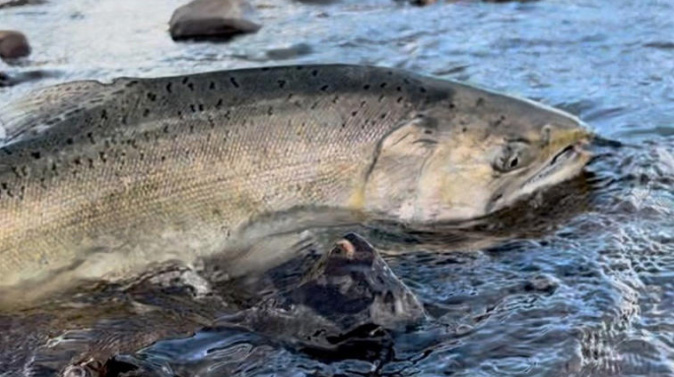||| FROM ASSOCIATED PRESS |||
A giant female Chinook salmon flips on her side in the shallow water and wriggles wildly, using her tail to carve out a nest in the riverbed as her body glistens in the sunlight. In another moment, males butt into each other as they jockey for a good position to fertilize eggs.
These are scenes local tribes have dreamed of seeing for decades as they fought to bring down four hydroelectric dams blocking passage for struggling salmon along more than 400 miles (644 kilometers) of the Klamath River and its tributaries along the Oregon-California border.
Now, less than a month after those dams came down in the largest dam removal project in U.S. history, salmon are once more returning to spawn in cool creeks that have been cut off to them for generations. Video shot by the Yurok Tribe show that hundreds of salmon have made it to tributaries between the former Iron Gate and Copco dams, a hopeful sign for the newly freed waterway.
“Seeing salmon spawning above the former dams fills my heart,” said Joseph L. James, chairman of the Yurok Tribe. “Our salmon are coming home. Klamath Basin tribes fought for decades to make this day a reality because our future generations deserve to inherit a healthier river from the headwaters to the sea.”
The Klamath River flows from its headwaters in southern Oregon and across the mountainous forests of northern California before it reaches the Pacific Ocean.
The completion of the hydroelectric dam removal project on Oct. 2 marked a major victory for local tribes. Through protests, testimony and lawsuits, the tribes showcased the environmental devastation caused by the dams, especially to salmon, which were cut off from their historic habitat and dying in alarming numbers because of poor water-quality.
There have been lower concentrations of harmful algae blooms since the dam removal, Toz Soto, fisheries program manager with the Karuk Tribe, said during a press conference after the dams came down. In October, the water temperature during the day was an average of 8 degrees Celsius (14 degrees Fahrenheit) cooler compared to the same month over the last nine years, according to the Klamath River Renewal Corporation, the nonprofit entity created to oversee the project.
“All in all, the fish that came up this year were really healthy,” Soto said. “I didn’t see fish with bacterial infections and things like that, so water temperature’s already having an impact on the fishes’ health.”
**If you are reading theOrcasonian for free, thank your fellow islanders. If you would like to support theOrcasonian CLICK HERE to set your modestly-priced, voluntary subscription. Otherwise, no worries; we’re happy to share with you.**








